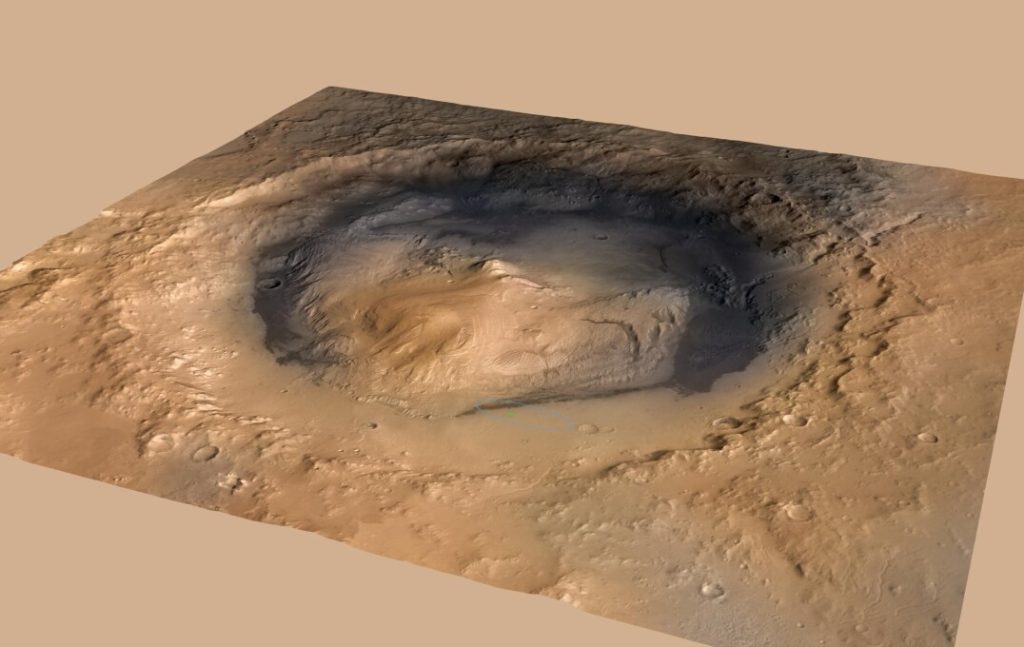Mars, the enigmatic red planet, has long fascinated humanity with its barren landscapes and tantalizing hints of ancient water. Among its many mysteries, the presence of water—both past and present—stands as a beacon of hope for scientists seeking to unravel the planet’s complex history. In a groundbreaking study led by researchers from Imperial College London, new evidence has emerged suggesting that water may have persisted in Mars’ Gale crater far longer than previously believed. This discovery not only sheds light on the planet’s evolving climate but also redefines our understanding of its potential habitability. In this article, we delve into the findings of this pioneering research, exploring the implications for Mars’ past and future exploration.
The Quest for Water on Mars
For centuries, astronomers have gazed upon Mars, captivated by its reddish hue and mysterious allure. Among the most pressing questions surrounding the planet is the presence of water—a fundamental ingredient for life as we know it. Over the years, spacecraft missions and rover explorations have revealed tantalizing clues suggesting that Mars was once a watery world, with ancient riverbeds, lake basins, and polar ice caps serving as testament to its aqueous past. Yet, the timeline of water’s presence on Mars has remained a subject of debate, with scientists striving to unravel the planet’s climatic history.
A New Discovery Emerges
In a landmark study published in Geology, researchers from Imperial College London, in collaboration with international partners, have uncovered compelling evidence of water’s persistence in Mars’ Gale crater. Using data and images from NASA’s Curiosity rover, the team identified deformed layers within a desert sandstone—a telltale sign of past water activity. Lead author Dr. Steven Banham and his colleagues analyzed the geological features of Mount Sharp, the central mountain within Gale crater, and discovered structures indicative of water-induced deformation.
Deciphering the Clues
The researchers’ analysis revealed that the Stimson Formation, a sandstone deposit draped over Mount Sharp, contained unmistakable signs of water influence. Despite being deposited during Mars’ supposed drying phase, the sandstone exhibited contorted structures, suggesting that water played a role in shaping the landscape. These findings challenge conventional wisdom about Mars’ climatic evolution, suggesting that water persisted in the region long after the planet was thought to have become arid and inhospitable.
Implications for Martian Habitability
The discovery of water-formed structures in the desert sandstone of Gale crater has profound implications for our understanding of Martian habitability. Previously considered less promising targets in the search for biosignatures, these formations now represent potential hotspots for exploring Mars’ ancient past. The prolonged presence of water in the region suggests that Mars may have been habitable for longer periods than previously thought, opening new avenues for astrobiological research and future exploration missions.
As humanity continues its quest to unlock the secrets of Mars, the findings of this study pave the way for exciting new discoveries. By extending the timeline of water persistence in Gale crater, researchers have identified prime locations for investigating the possibility of past life on Mars. Future rover missions, equipped with advanced instrumentation and analytical tools, will have the opportunity to explore these intriguing sites in greater detail, probing the Martian surface for traces of ancient microbial life.
The quest for water on Mars has been a driving force behind planetary exploration for decades. Now, thanks to the pioneering research conducted by the team at Imperial College London, we have gained valuable insights into the planet’s climatic history and potential habitability. From the desolate landscapes of Gale crater to the towering peaks of Mount Sharp, Mars continues to surprise and inspire us with its mysteries. As we chart a course for future exploration, guided by the discoveries of today, we remain ever vigilant in our pursuit of knowledge, determined to unlock the secrets of the red planet and unravel the mysteries of our cosmic neighbor.
